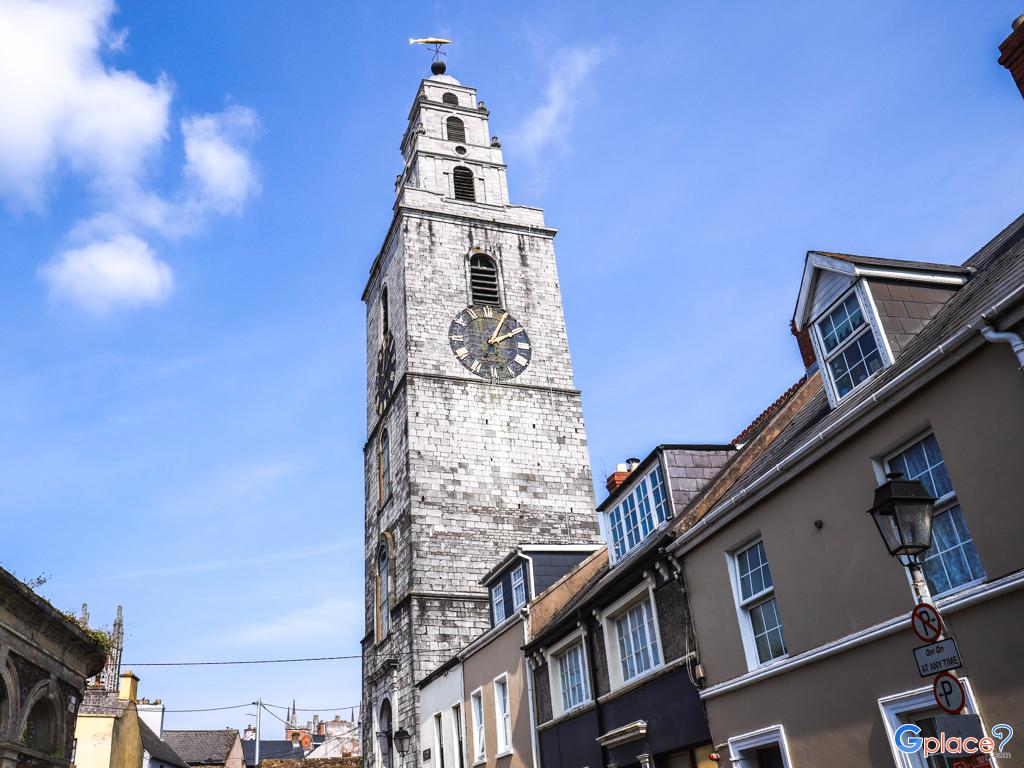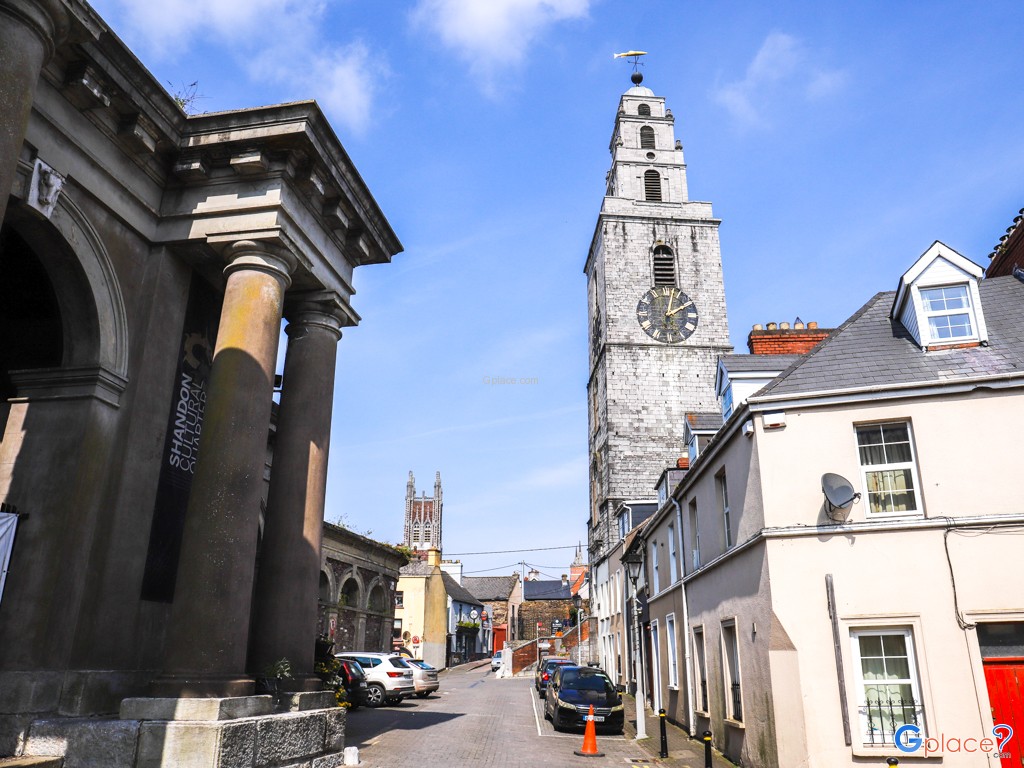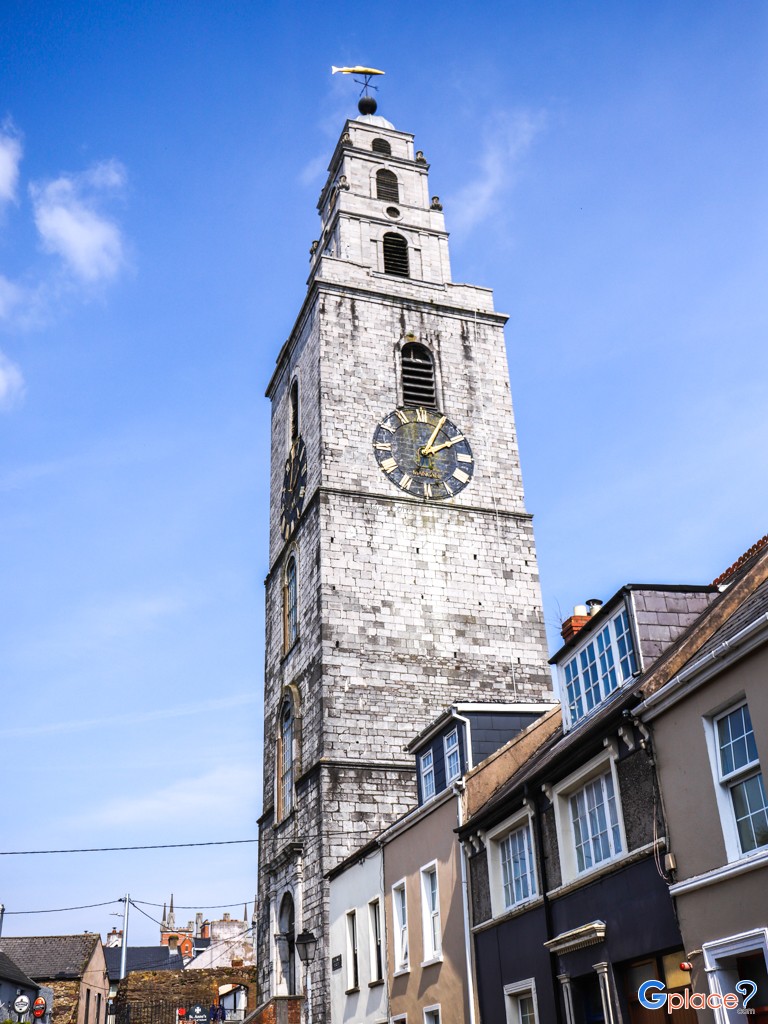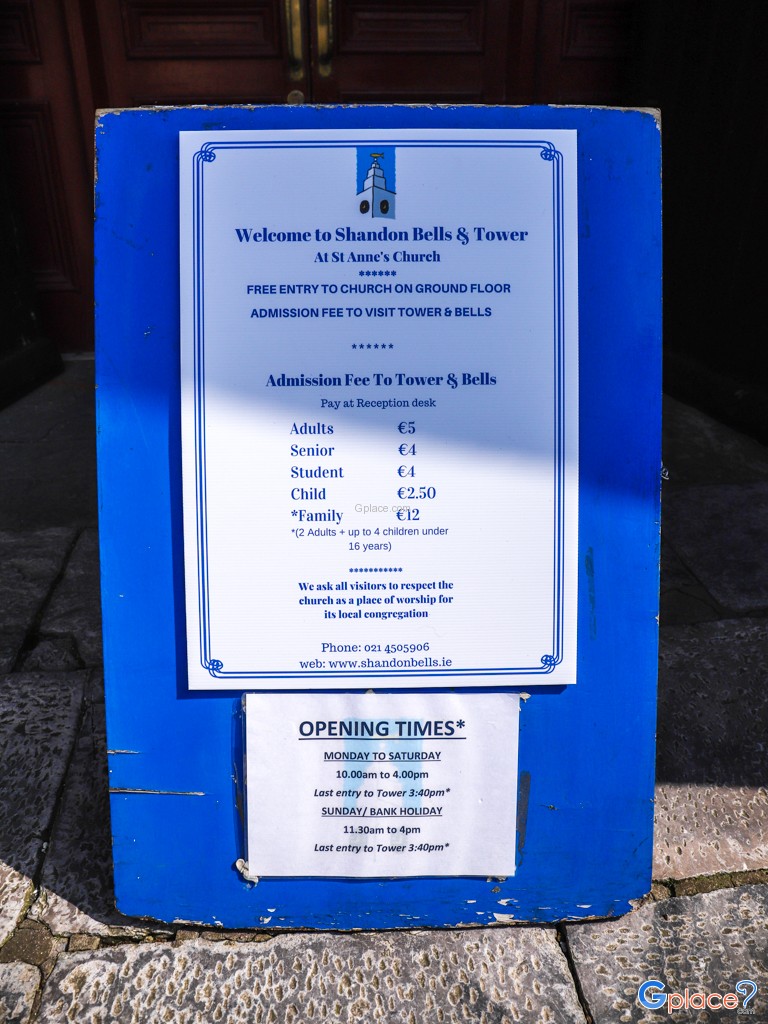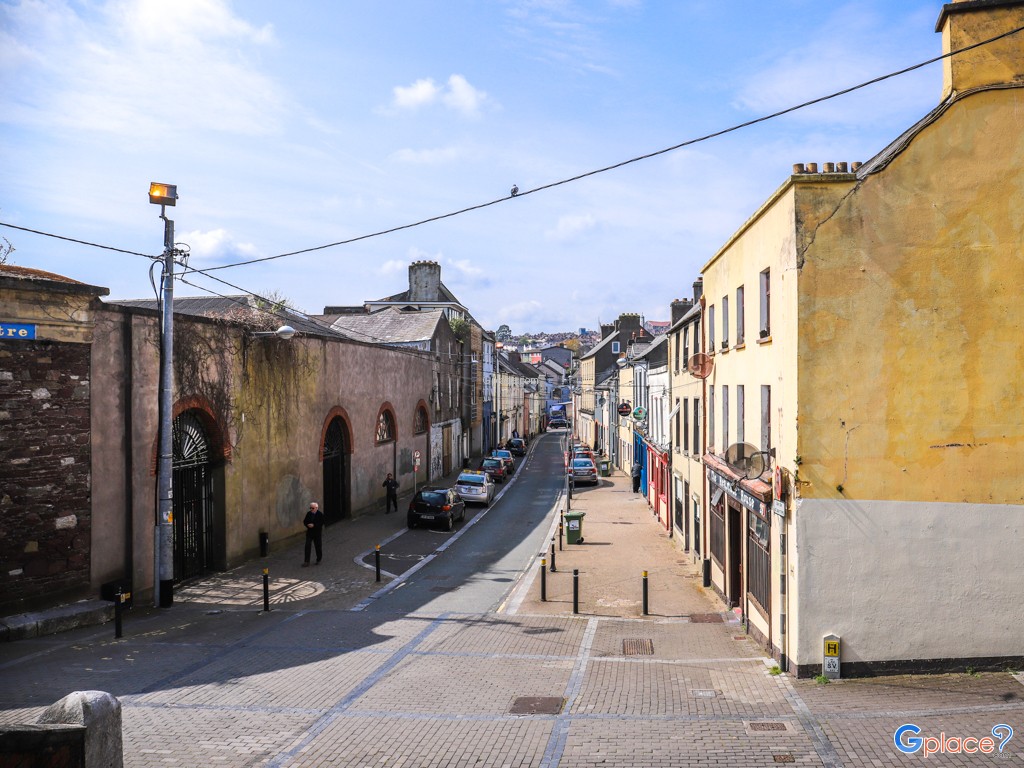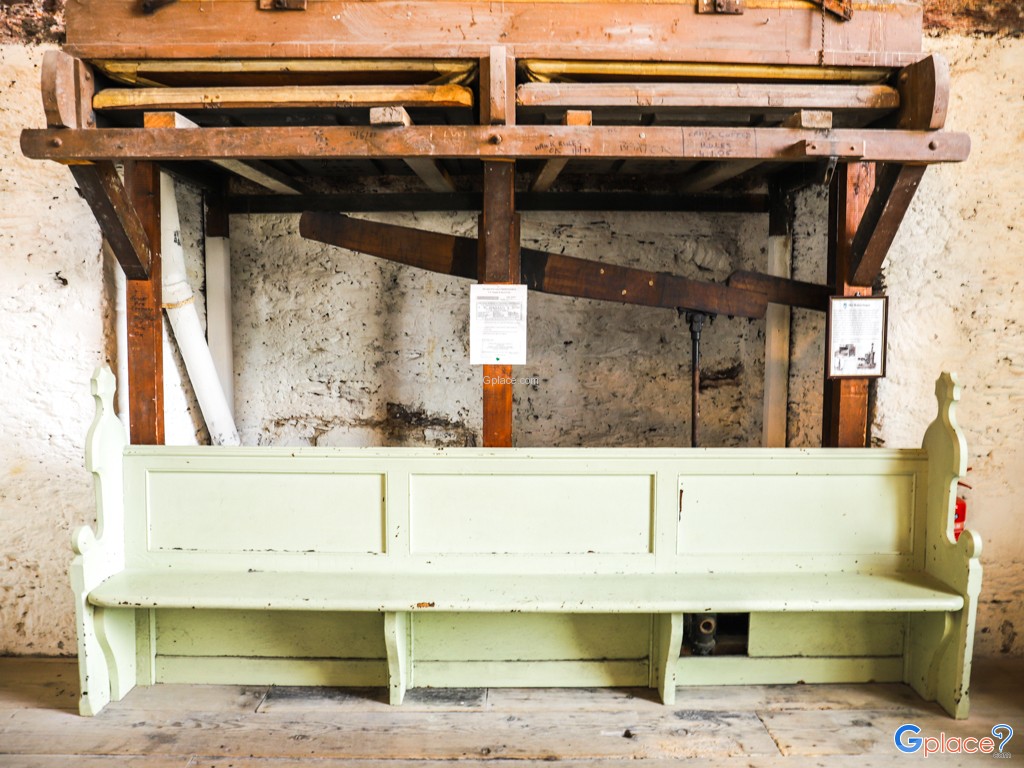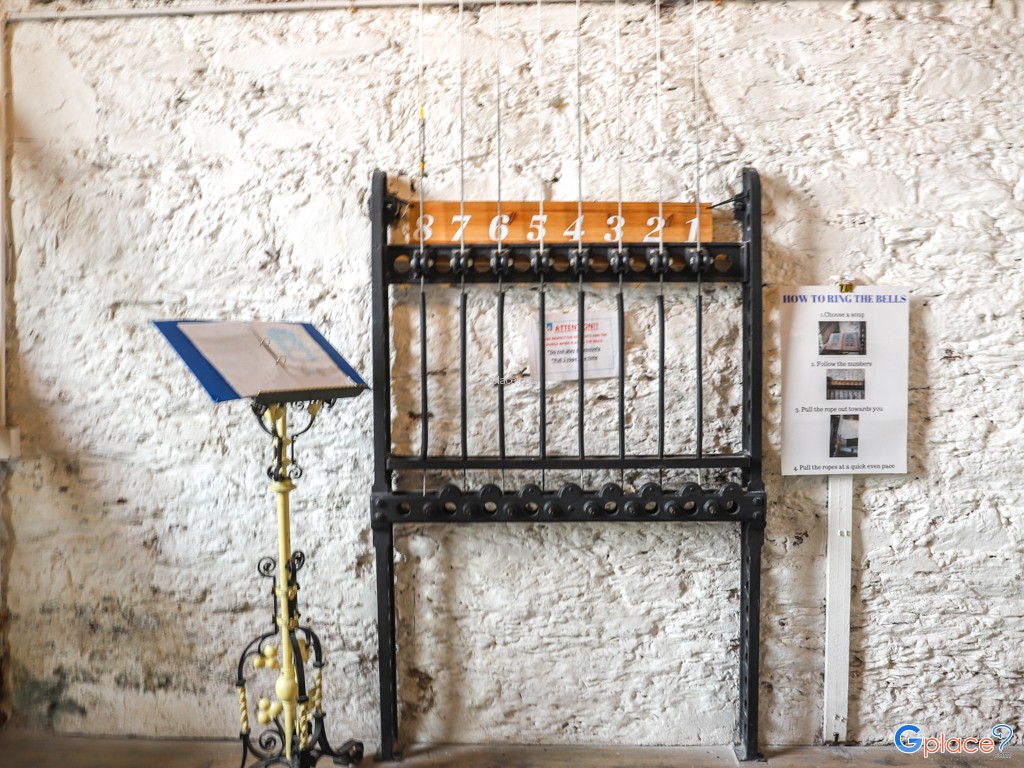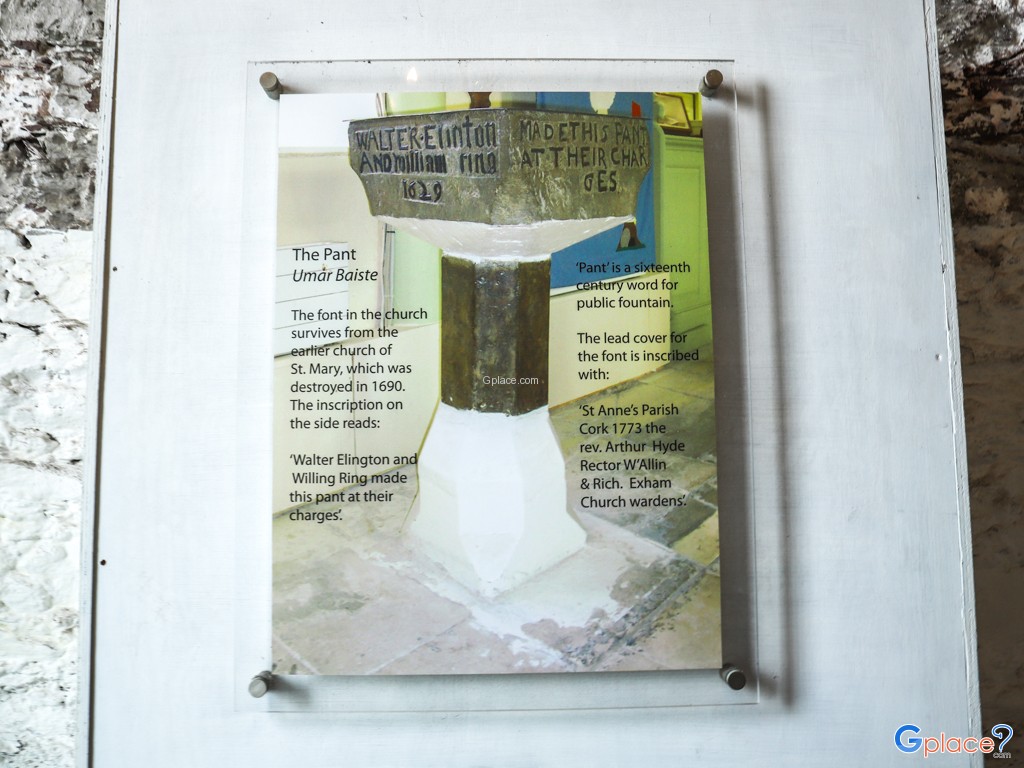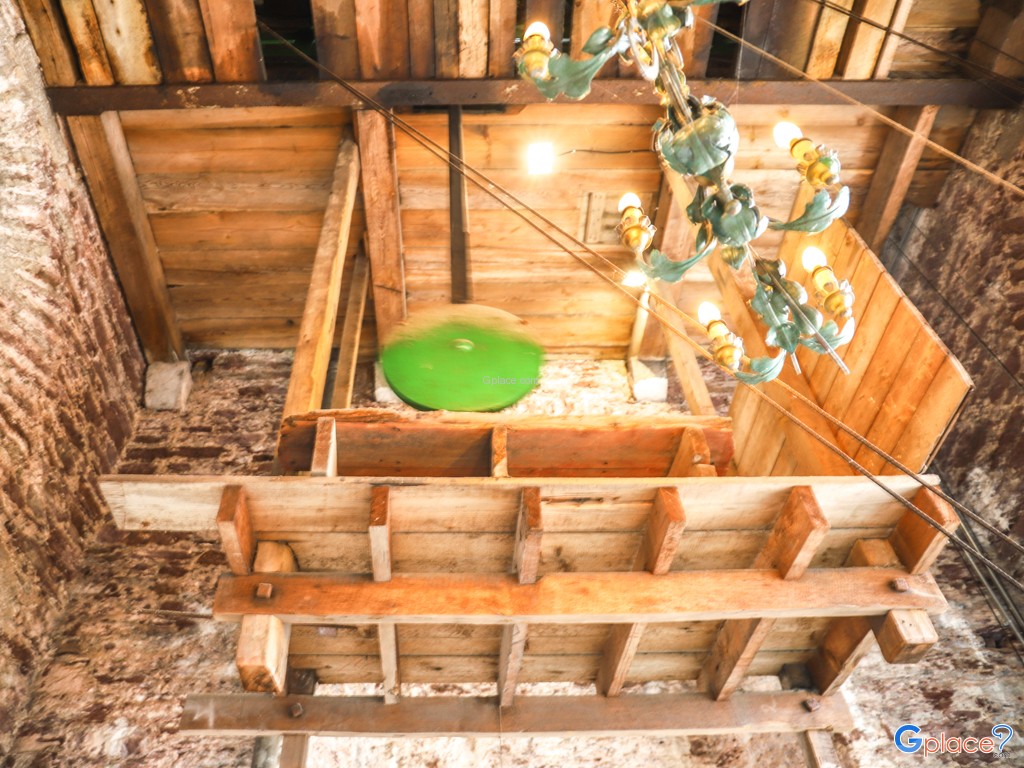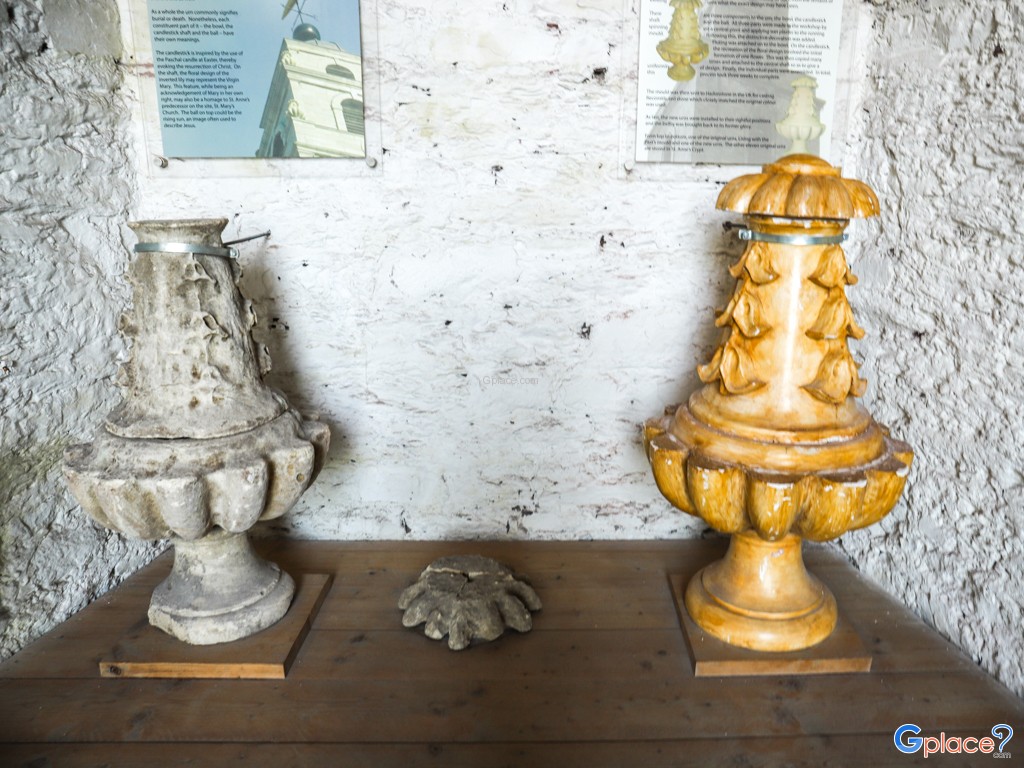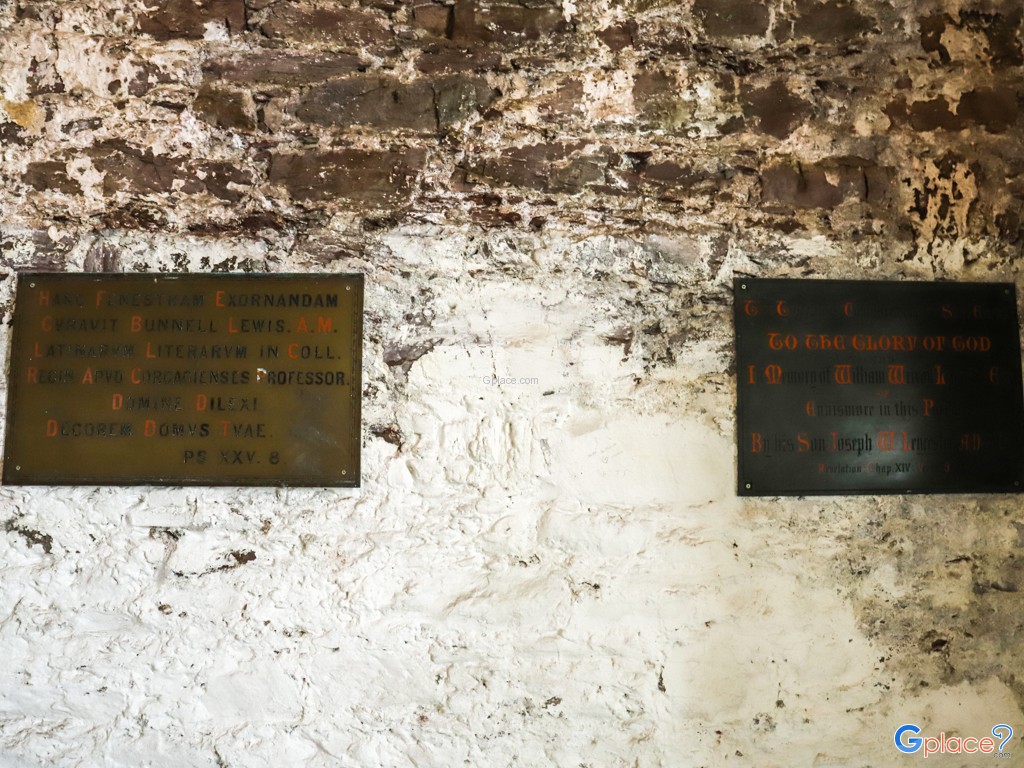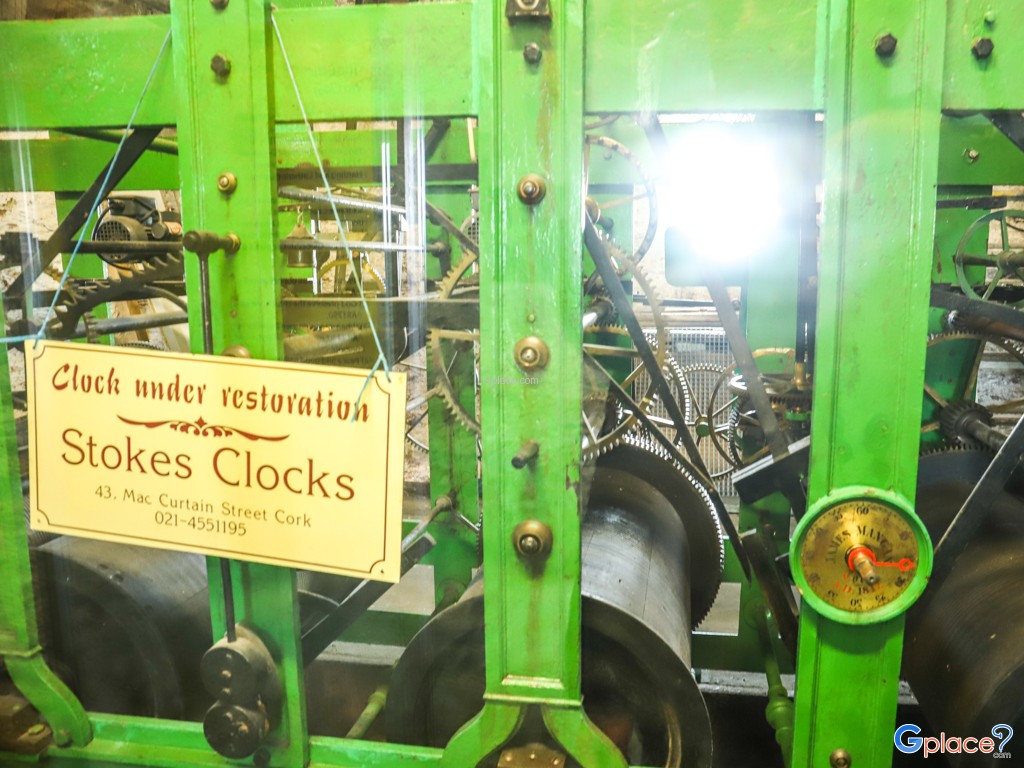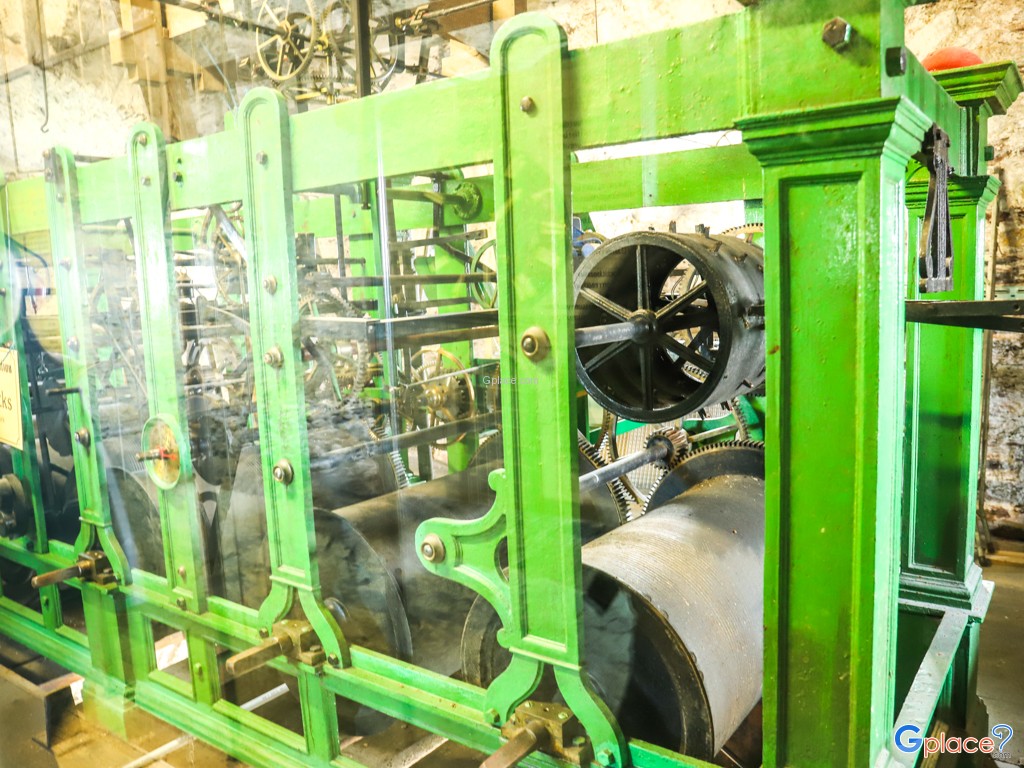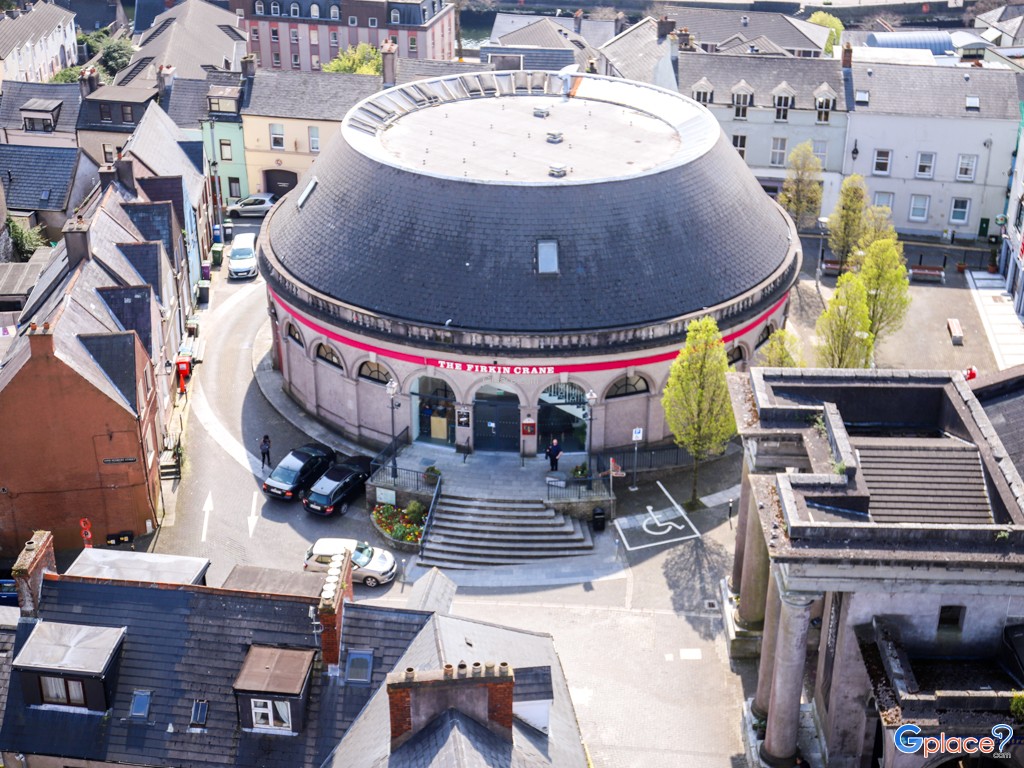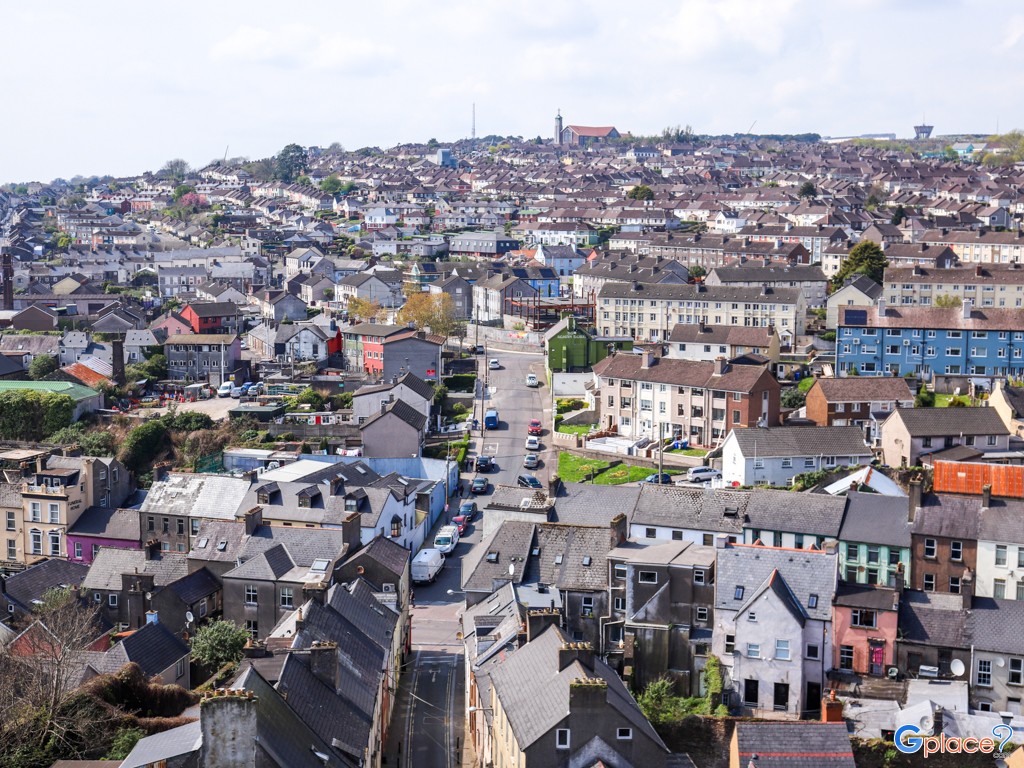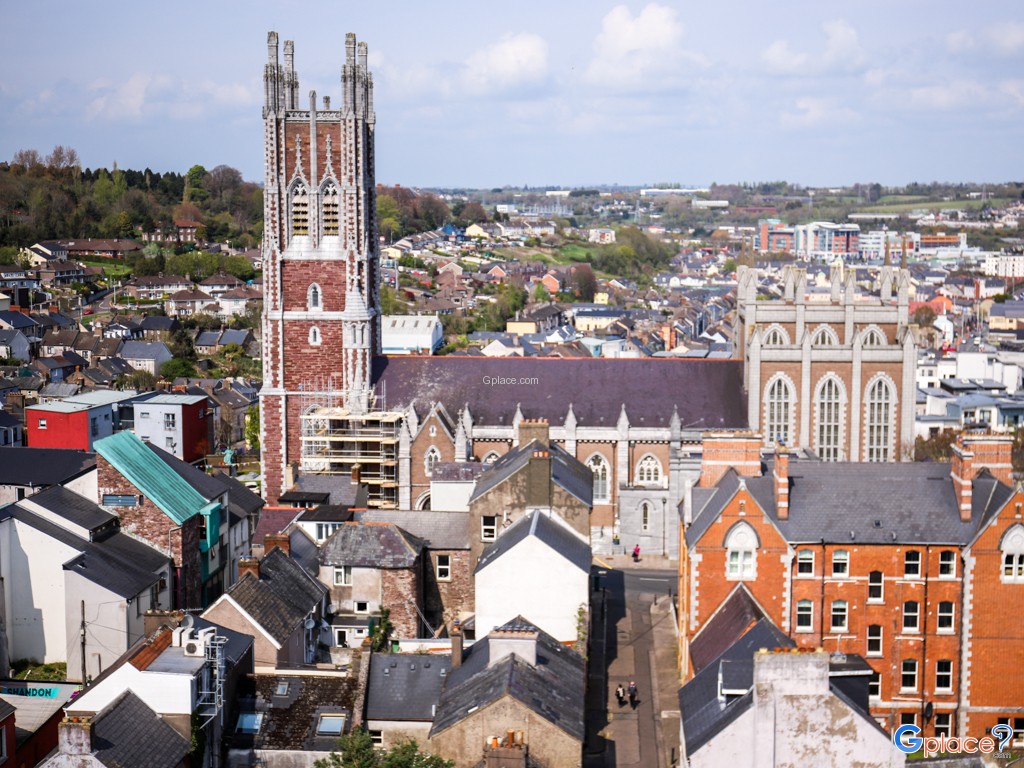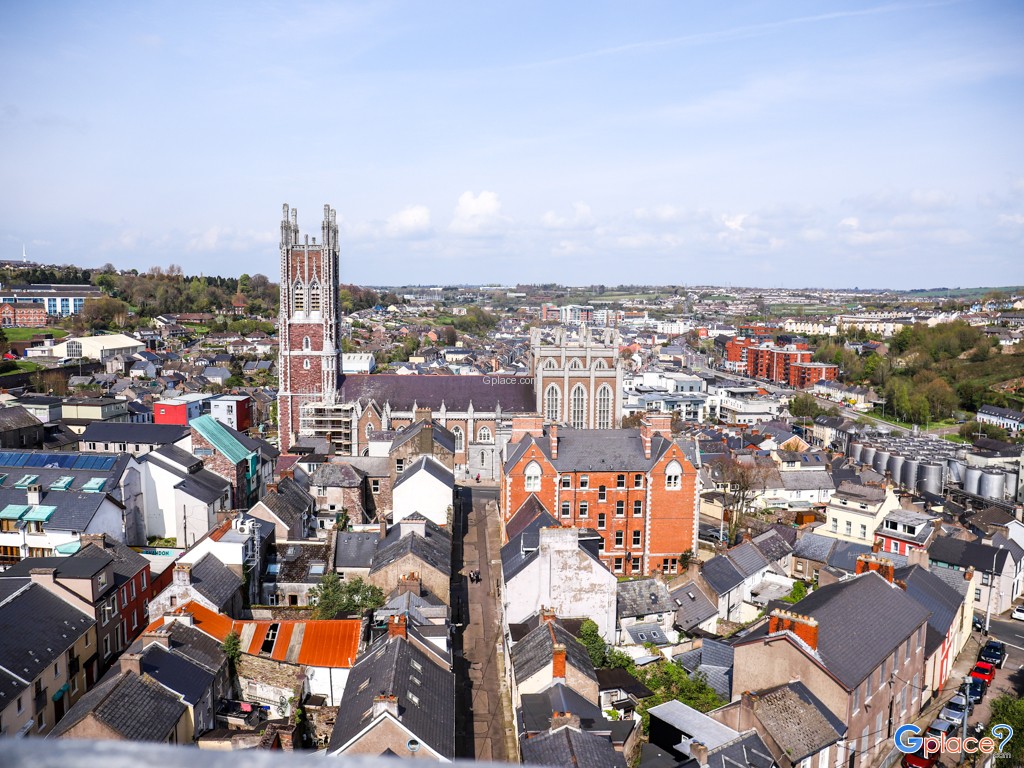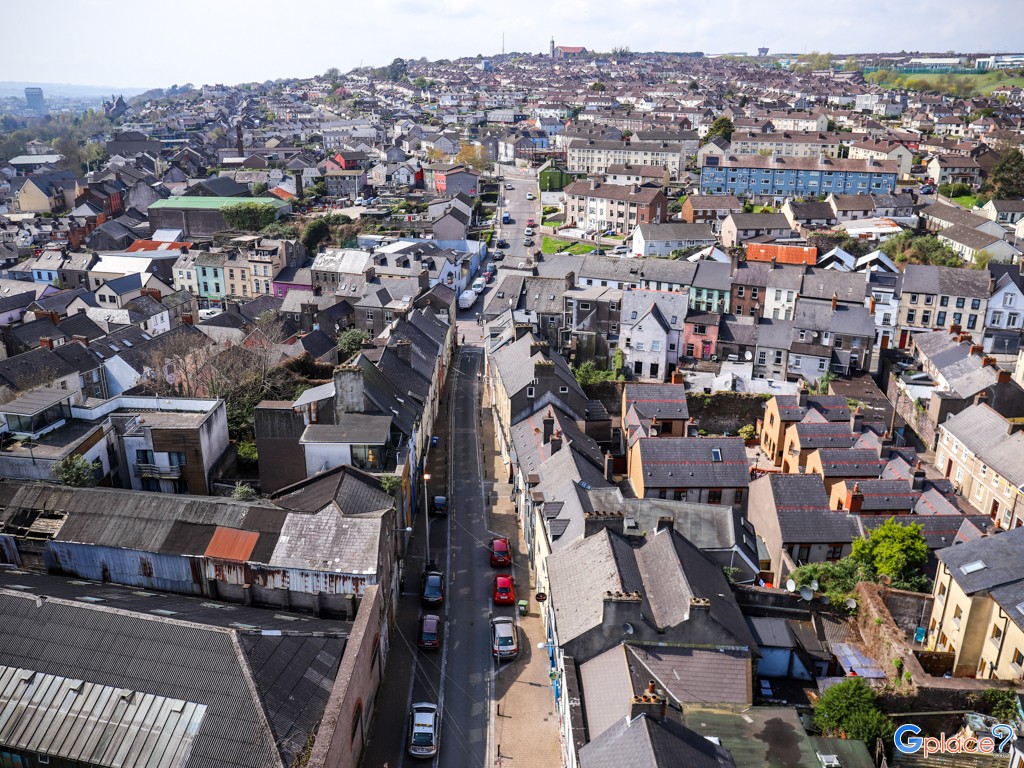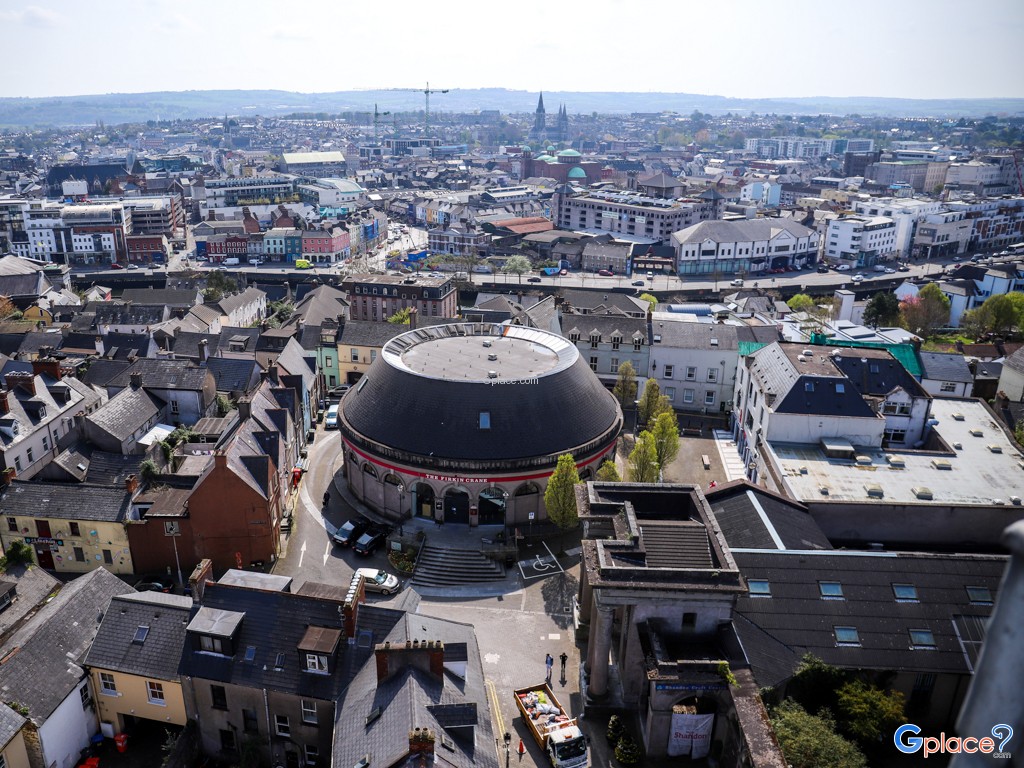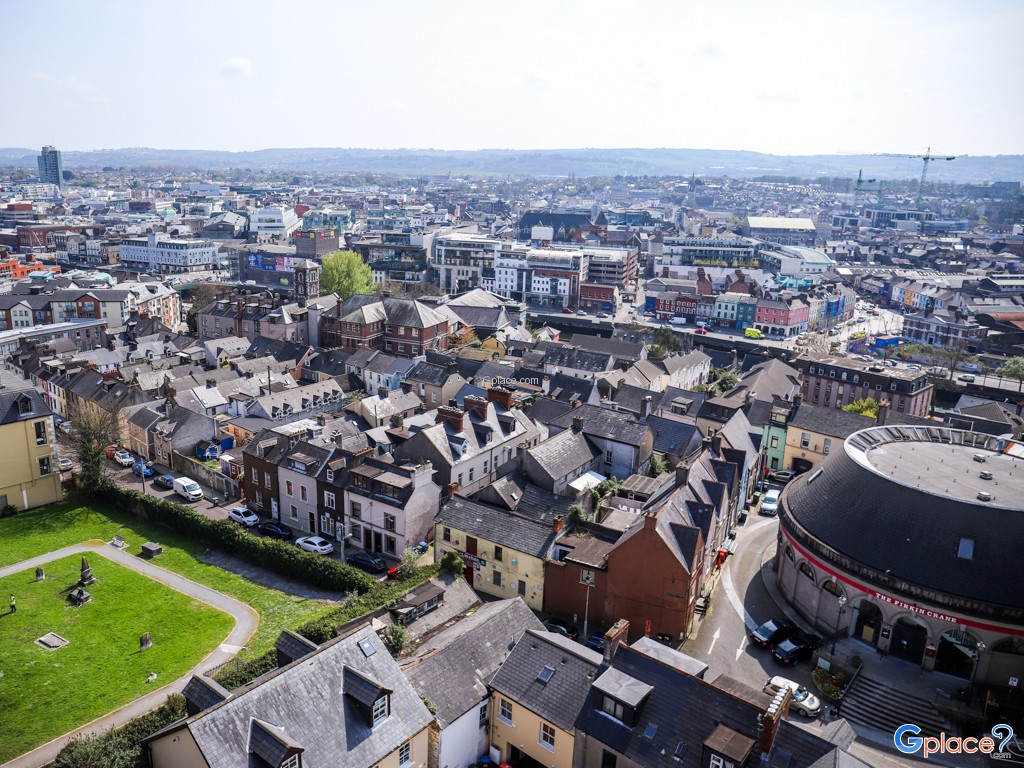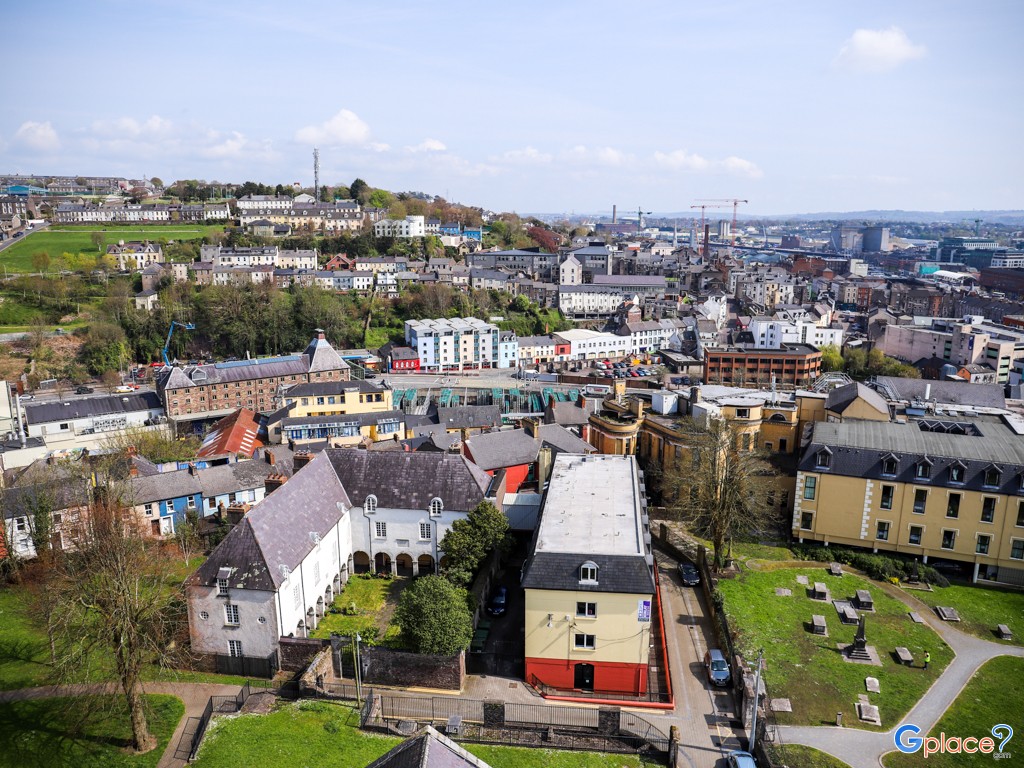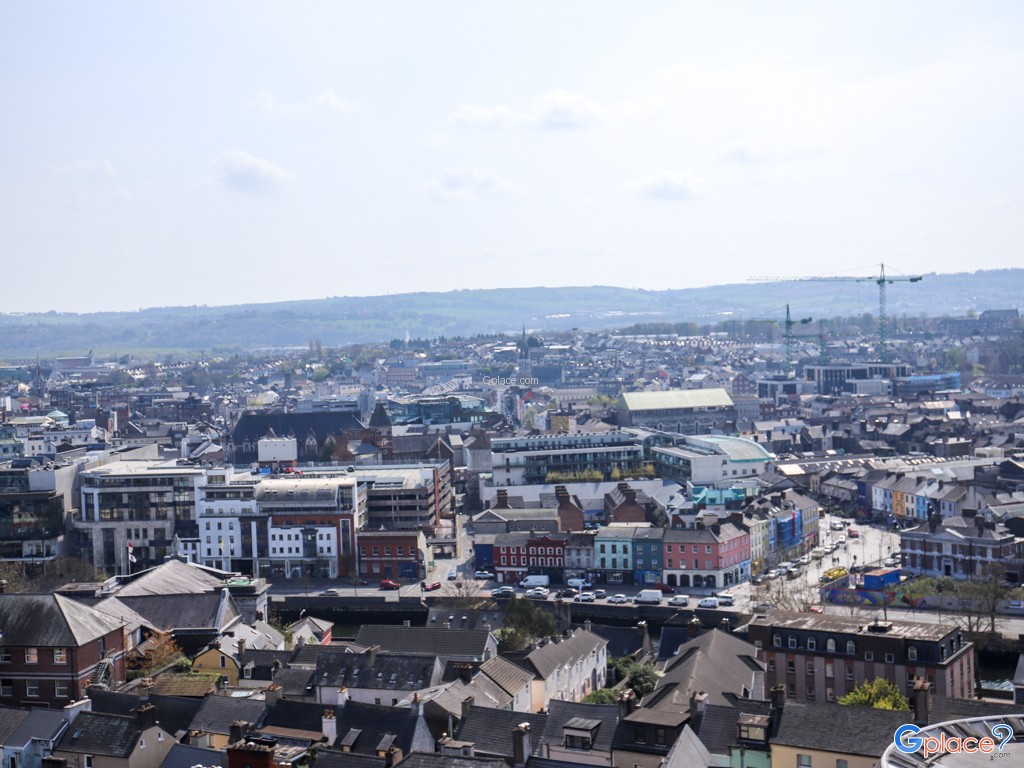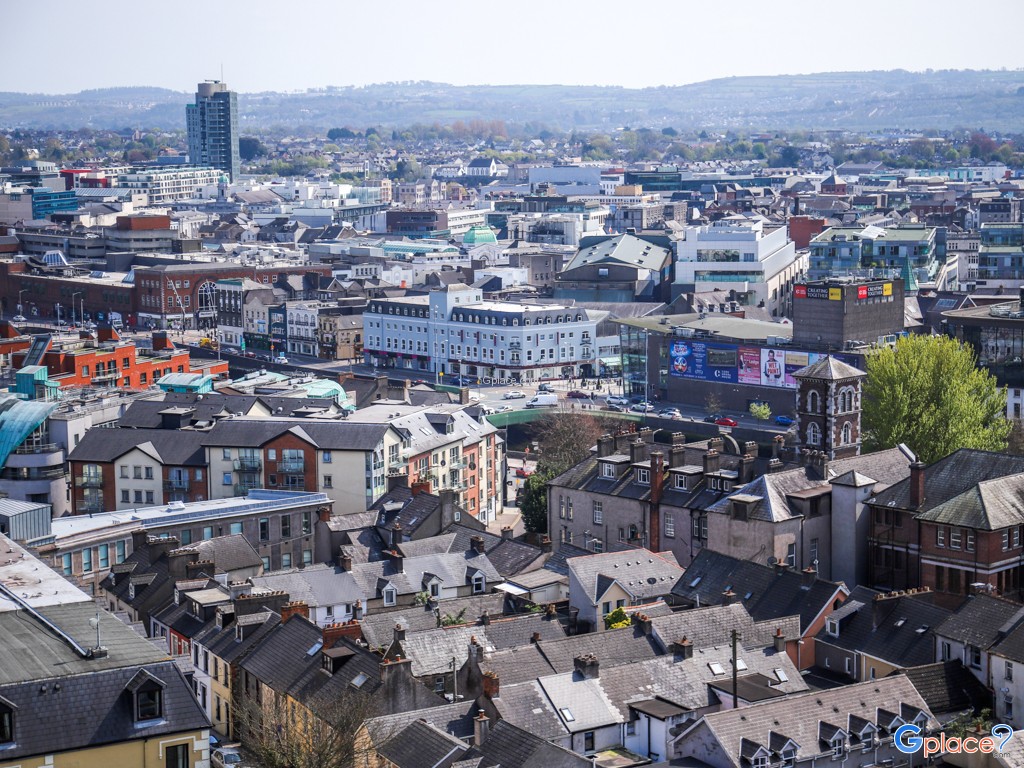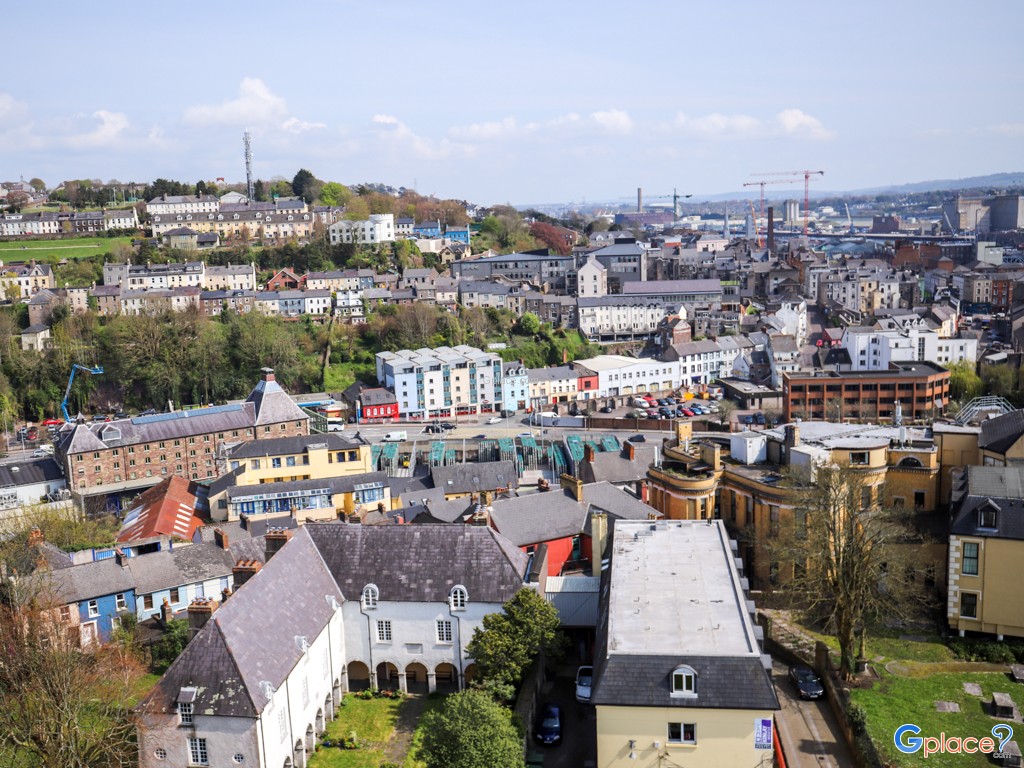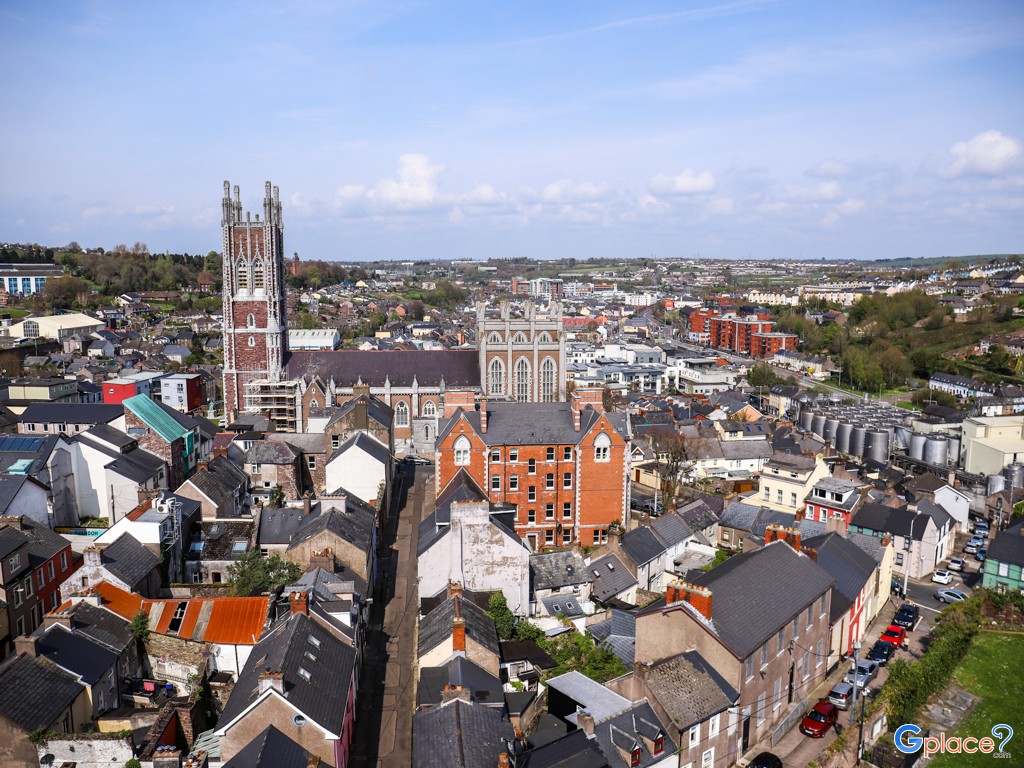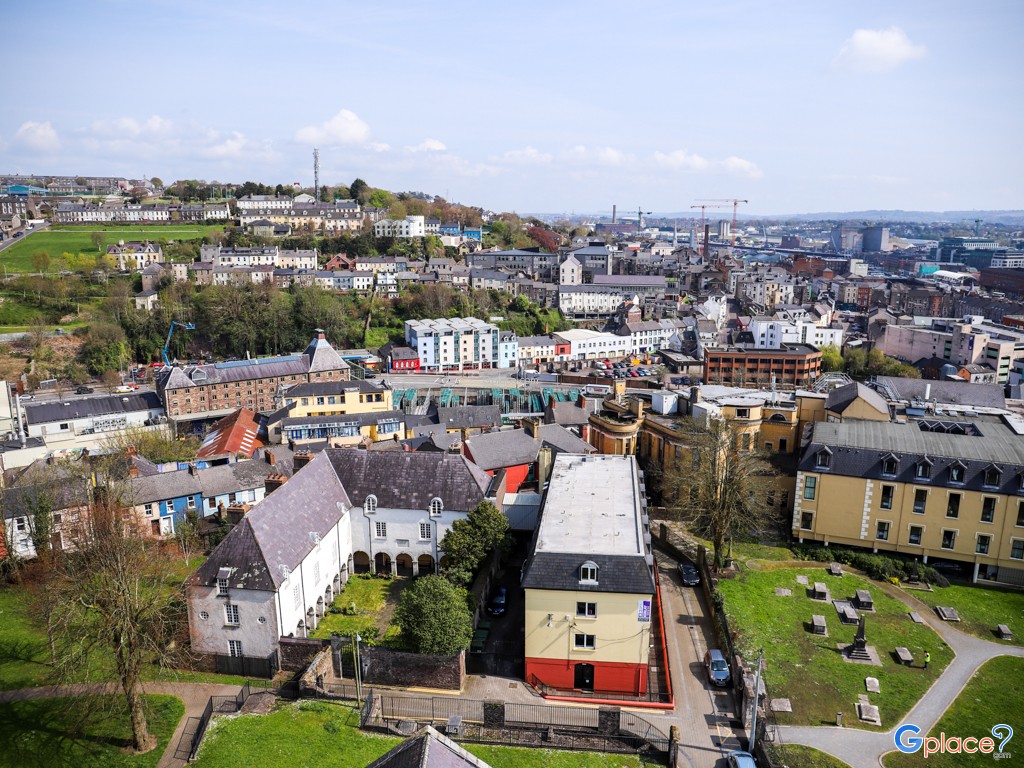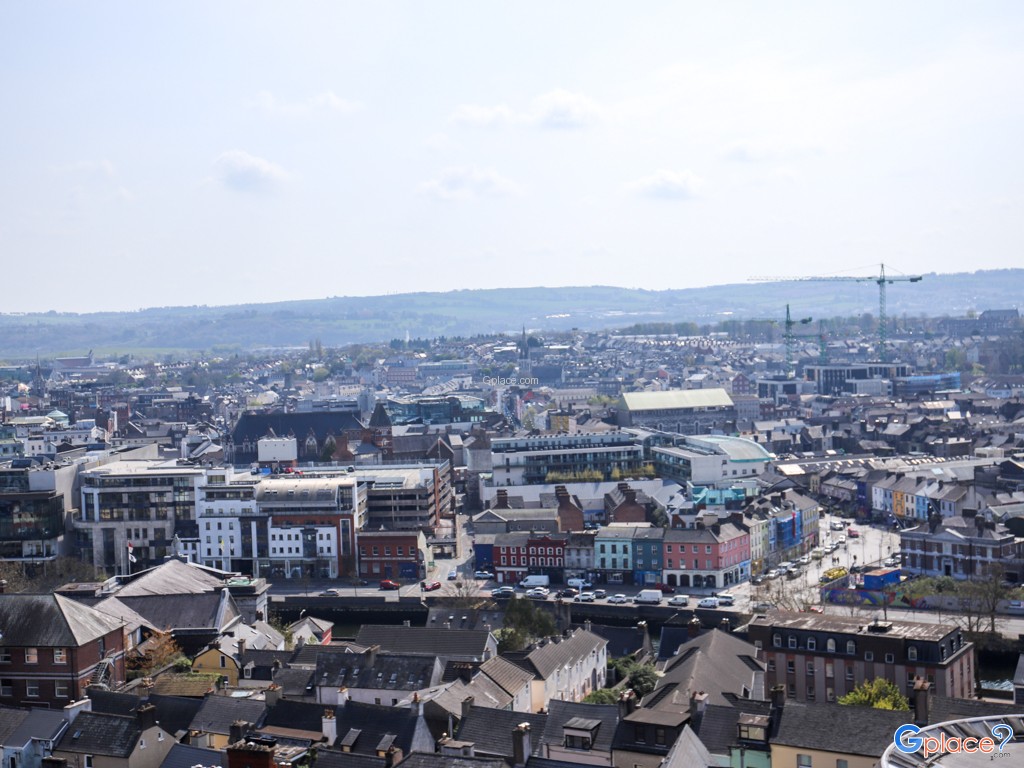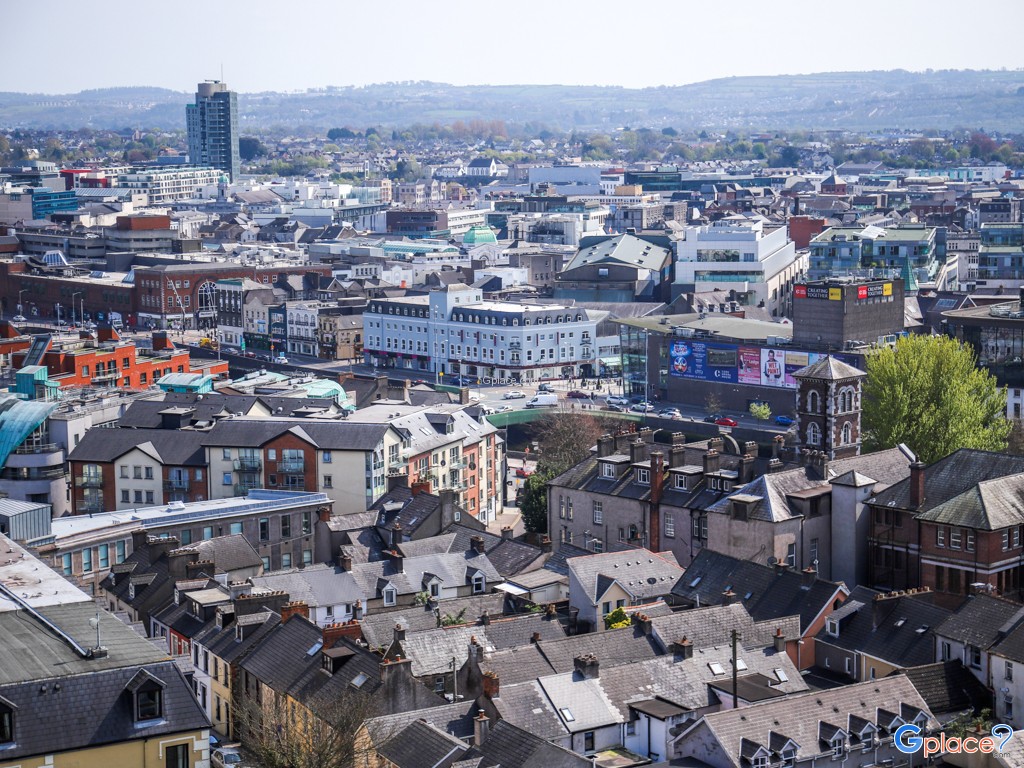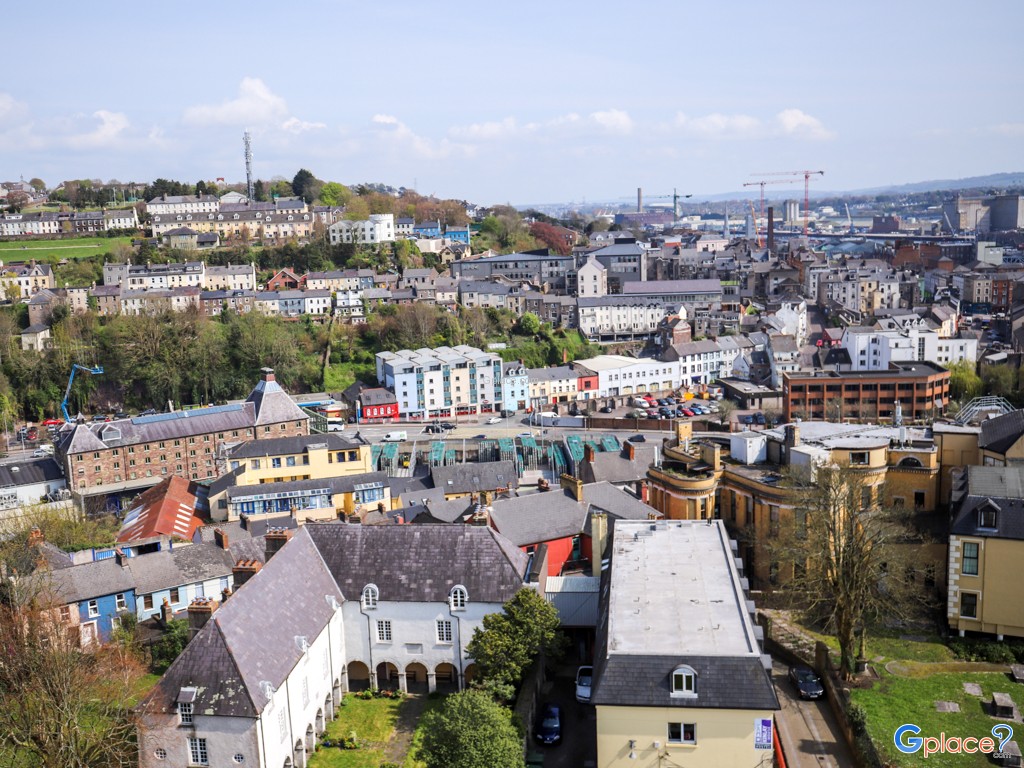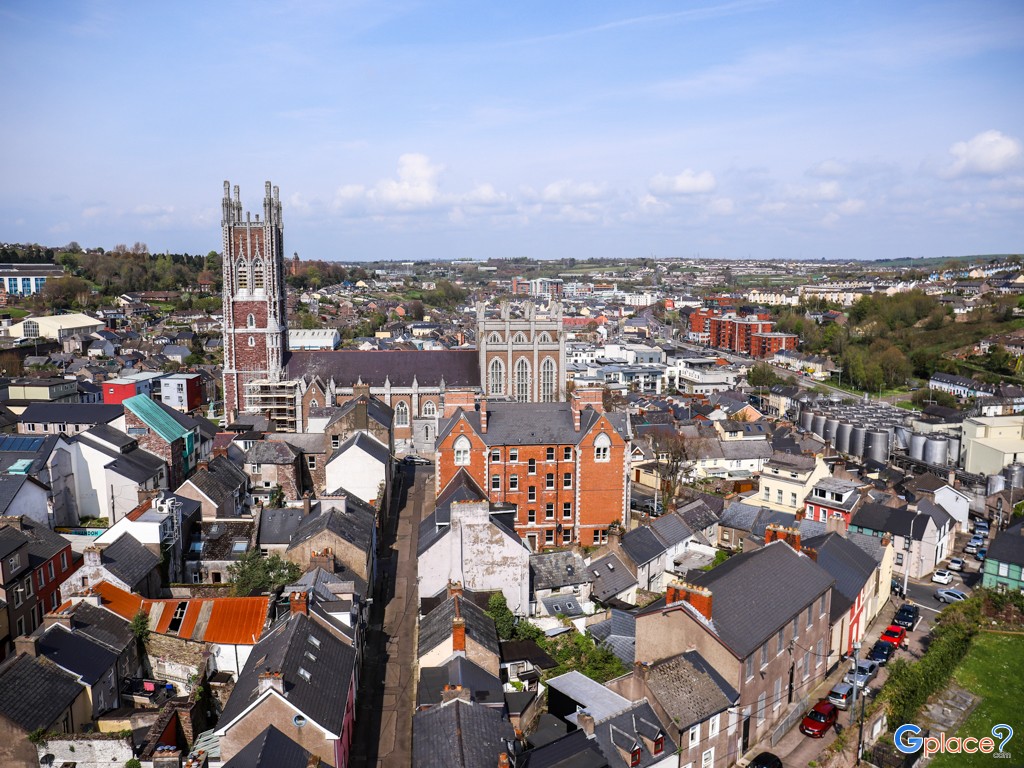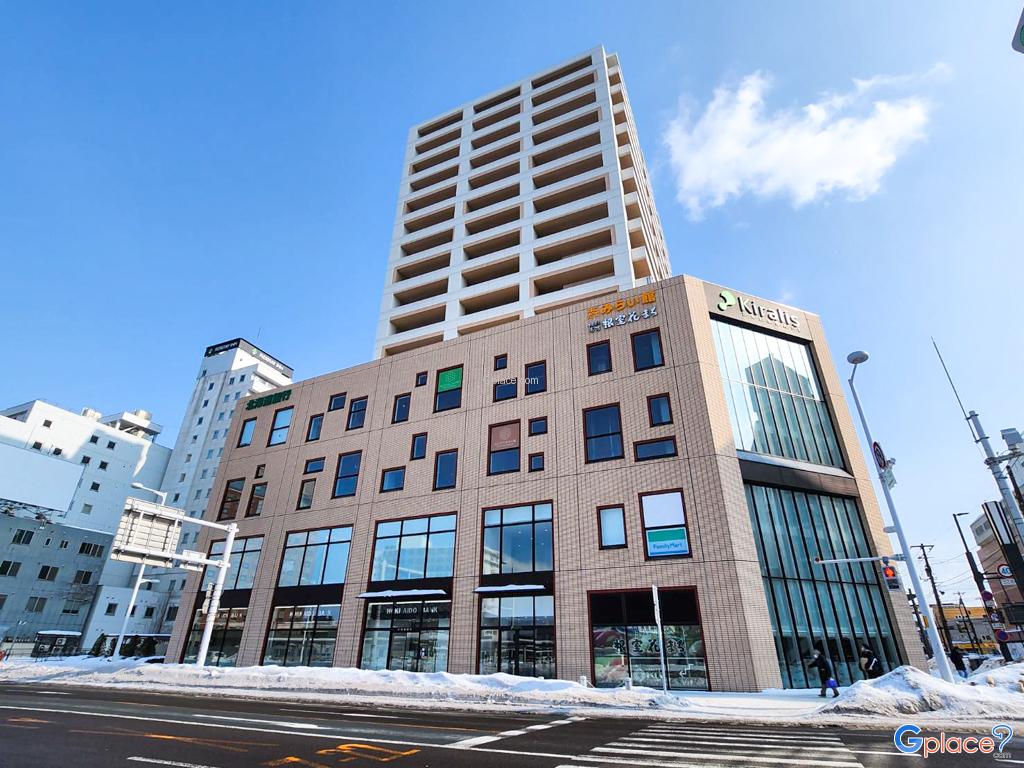“The church is located on a hill overlooking the River Lee. The church tower is a landmark and symbol of the city, and church bells were popular in 19th-century songs.”
The Bell Tower
Standing 37 meters (170 feet) tall with walls 2.13 meters (7 feet) thick, the Shandon Bell Tower is a masterpiece of 18th-century engineering. The first three levels were built in 1722 as part of St. Anne’s Church project, with three additional tiers added in 1750 to accommodate the newly cast eight bells. Designed by engineer-architect McOsterick, the tower culminates in a “pepper pot” copper dome topped with a 4-meter (13-foot) golden salmon weathervane, honoring Cork’s thriving 18th-century salmon industry.
The tower’s striking two-toned façade features red sandstone on the north and east sides, and white limestone on the south and west sides, reflecting local geology and the long-standing “parti-coloured” myth of Cork’s residents.
St. Anne’s Church
Built in 1722 on the site of the former St. Mary’s Church (destroyed in the 1690 Siege of Cork), St. Anne’s features a shallow curved apse, simple rectangular plan, and a tower typical of provincial 18th-century churches. Reputed architect John Coltsman, who also designed Christ Church, North Gate Bridge, and South Gate Bridge, oversaw its construction. Limestone likely came from nearby Gillabbey outcrops, while the red sandstone may have been quarried from the adjacent hillside.
Inside, visitors can see relics such as the stone baptismal font from 1629 and original box pews. Tradition suggests that prior to 1300 AD, the altar may have been located at the center of the south wall. Francis Sylvester Mahony (Fr. Prout), author of the poem/song immortalizing the Shandon Bells, is buried in the church graveyard, creating a tangible cultural connection.
The Interactive Experience: Ringing the Bells
Visitors climb the tower and play the eight historic bells, originally cast in 1750, using numbered ropes and sheet music. The joyful sound resonates across Cork City, offering a hands-on historical experience.
Panoramic Views
The top balcony provides sweeping 360° views of Cork City, the River Lee, historic buildings, and surrounding hills—ideal for photography.
How to Get There
-
On Foot: About 10–15 minutes from Cork city center.
-
By Bus: Multiple local bus lines stop near the Shandon district.
-
By Car: Limited parking is available nearby; early arrival recommended.
Travel Tips
-
The climb is steep and narrow (over 130 stone steps) and may not be suitable for visitors with mobility challenges or claustrophobia.
-
Wear comfortable shoes for climbing.
-
Visit early to avoid crowds.
-
Bring a camera for stunning panoramic views.
Admission Fee:
-
Main ticket (includes tower and church interior): Approx. €6–€7 per person.
-
Small fee may apply for church-only access—check on-site.
Opening Time:
- Daily, 10:00 AM – 4:00 PM (hours may vary seasonally).

















